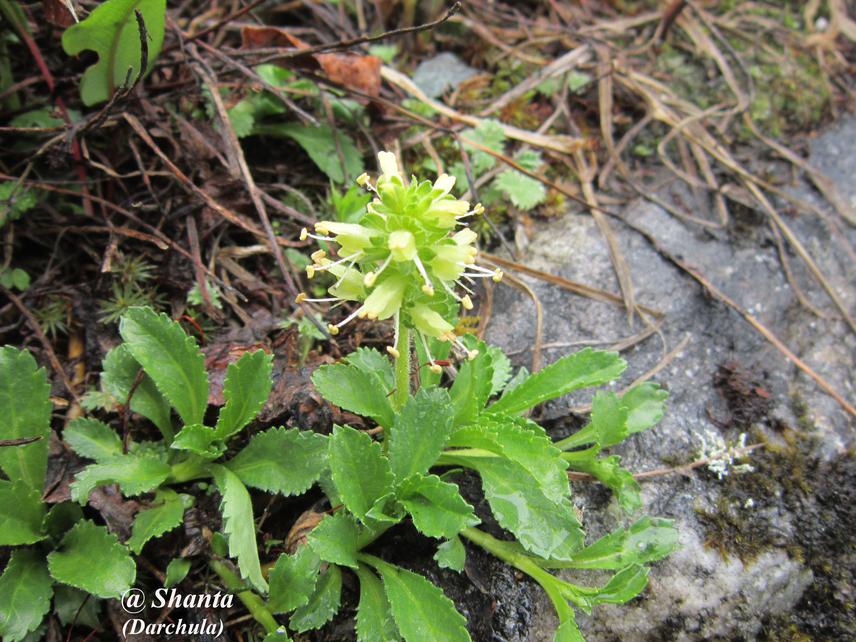Article featuring the project.
Santosh Kumar Rana
The complex topography and climatic variability of the Himalayan landscape gave rise to the high ecosystem/species diversity, and due attention for the conservation of Non-Timber Forest products (NTFPs) in Nepal. In these diverse ecosystems, many NTFPs have gone from subsistence collection to over harvesting and degradation of valuable species. Therefore, the sustainable harvesting issues of MAPs, a major component of NTFPs, are needed to address for the conservation in future. Thus, project aims to address sustainability issues by analyzing their habitat suitability alongwith mapping the current and forecasted future natural distribution under a climate change scenario thereby assessing their vulnerability and niche.

Neopicrorhiza scrophularifolia.
Nepal is a country with diverse ecosystem and high species diversity due to the topographic complexity and climatic variability. Of the 6653 flowering plants recorded, 701 species are considered to have medicinal properties (DPR, 2012) and 30 medicinal plants are prioritized for research and development which are identified as commercially important Medicinal and Aromatic Plants (MAPs) (Forest sector policy, 2000). MAPs in the wild are depleting due to continuous harvest without any plan to regenerate and sustain them. Over-harvesting of has made them rare in wild, as well threatening or even endangering their status. Thus, it is essential to analyze their habitat suitability and map the current and future natural distribution under climate change scenario (Rana et al., 2017).
The primary goal of this research project is to create potential natural distribution map predicting the suitable geographic distribution area and niche (for current and future) of 5 highly traded prioritized MAPs of Nepal. They are Neopicrorhiza scrophularifolia, Nardostachys grandifolia, Dactylorhiza hatagirea, Aconitum spicatum and Valeriana jatamansii.
For the project, we will use Maxent and Arc GIS to map the current and future distribution; ENMTools v1.3 to identify the niche differences occupied by the focal species using the niche overlap and niche identity test indexes: Schoener’s D (D), I statistic (I) and relative rank (RR) and species extinction risk as vulnerability analysis through the predicted habitat in current and future scenario.
The result will be an asset to determine the vulnerability and sustainability in future scenarios. In addition, identification of potential regions where this species can grow could be a use for initiating farming at community or government level to reduce the pressure in over exploitation at the existing population. The result will establish a link between bioclimatic factors and the occurrences of MAPs to determine the gaps of MAPs habitat in the climate change scenarios. Besides species distribution modelling, this study will continue the ecological/socio-economic survey in other new study areas in order to generate and enrich multidisciplinary knowledge for meaningful conservation intervention and sustainable management. So, the proposed work for the highly traded MAPs has high conservation importance not only for local people but also for the nation, as MAPs are the treasures of the nation.